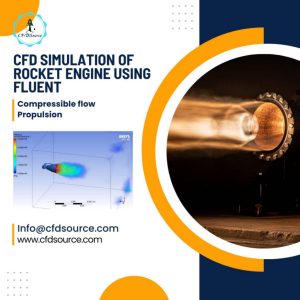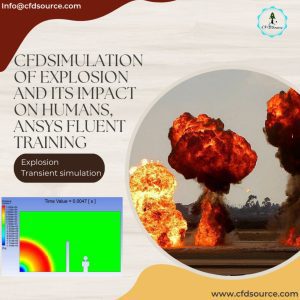Why “Rule of Thumb” Fails: The Multi-Million Dollar Risk of Inadequate Electronics Cooling
Relying on old-school heatsink calculations for today’s high-density electronics is like navigating a minefield blindfolded. I’ve seen projects, good ones, get derailed late in the game because a “safe” thermal margin evaporated in real-world conditions. A single hotspot, missed by a spreadsheet calculation, can lead to thermal throttling, catastrophic failure, and product recalls. That’s where a proper CFD thermal analysis for electronics cooling becomes less of an expense and more of an insurance policy. It’s about replacing guesswork with data-driven certainty, and our specialized [CFD thermal analysis services] are built around that very principle.
Beyond the Basics: What Constitutes a Truly Reliable CFD Thermal Simulation?
Anyone can get a colorful temperature plot out of a CFD package. It’s easy. But does it mean anything? A reliable simulation isn’t just a pretty picture; it’s a digital twin of reality. It’s built on validated material properties, accurate power inputs, and a mesh that actually captures the critical physics at play, especially in the boundary layer. Without that, you’re just making expensive art.
The Core Physics: Modeling the Heat Journey in Your Electronic Device
To cool something effectively, you have to understand how it gets hot in the first place. Heat in an electronic device is a journey. It starts in a tiny silicon die, travels through layers of materials (the TIM, the heat spreader, the heatsink), and finally escapes into the surrounding air. Getting the simulation right means correctly modeling every step of that journey. ⚙️
The Three Pillars of Heat Transfer: Correctly Modeling Conduction, Convection, and Radiation
You’ve got three paths for heat: Conduction (through solids like the PCB and the heatsink), Convection (carried away by airflow), and Radiation (heat radiating off surfaces). It’s surprising how many analyses I’ve reviewed that either oversimplify or completely ignore radiation. At high component temperatures, it can be a significant part of the cooling process, and getting it wrong skews the whole result. Each needs its own attention.
| Heat Transfer Mode | Key Modeling Consideration for Electronics | Common Pitfall |
| Conduction | Accurate thermal conductivity (k-value) for all materials, including PCBs (which are anisotropic) and Thermal Interface Materials (TIMs). | Using a generic k-value for a complex PCB layup. |
| Convection | Correctly defining the fluid (usually air), its properties, and the flow regime (laminar vs. turbulent). | Assuming uniform airflow over a heatsink when it’s actually blocked by other components. |
| Radiation | Defining surface emissivity for key components. A black, anodized heatsink behaves very differently than a shiny, metallic one. | Ignoring radiation entirely in a natural convection scenario, where it can account for >20% of heat dissipation. |
Pinpointing the Source: Accurately Defining Joule Heating and Component Power Dissipation
The old ‘Garbage In, Garbage Out’ rule is king here. Your simulation is only as good as your inputs. If you tell the software a chip produces 5W when it’s actually spiking to 8W under load, your results are useless. We always push for realistic power dissipation values from electrical testing, not just the datasheet ‘typical’ number. It’s about modeling the actual operating state, not some idealized version of it.
Airflow is Everything: Choosing Between Forced vs. Natural Convection Models for Realistic Results
Is your device sitting on a desk in a quiet room, or does it have a fan blasting air through it? This choice—Natural vs. Forced convection—changes everything about the simulation setup. Natural convection is subtle, driven by small density changes in the air. Its a harder problem to solve accurately. Forced convection is more direct, but you have to get the fan curve and flow path right. Don’t just guess the airflow; model it. 🔥
The CFDSource Blueprint: A Step-by-Step Workflow for Actionable Insights
After 15 years in this field, you learn that successful projects don’t happen by accident. They follow a process. We’ve refined ours down to a science to ensure nothing gets missed, from the first time we see your CAD file to the final report. This isn’t just a checklist; it’s a system for ensuring accuracy and repeatability. We’ve detailed the whole thing in our guide on [our 5-step project workflow], but here’s a glimpse.
Step 1: From Messy CAD to a Simulation-Ready Model (Geometry Cleanup & Simplification)
The first hurdle is almost always the geometry. CAD models built for manufacturing are rarely ready for simulation. They’re full of tiny fillets, screw threads, and logos that will create a nightmare mesh and add zero value to the thermal analysis. The first step is always a careful ‘de-featuring’ process. This is tedious, detailed work, and honestly, it’s one of the biggest reasons companies find value in [bringing in an external CFD consultant vs keeping it in-house]. We clean it, simplify it, and make it ready for what matters: the physics.
Step 2: The Art of Meshing for Thermal Accuracy (Why y+ and Boundary Layer Meshes Are Non-Negotiable)
This is where many DIY simulations fall apart. A coarse, sloppy mesh won’t capture the thin layer of air right next to a component’s surface—the “thermal boundary layer”—which is where all the convective heat transfer actually happens. To get this right, we obsessively check the y+ value. It’s a dimensionless number that tells you if your mesh is fine enough to resolve this critical region. Get it wrong, and your heat transfer coefficient could be off by 50% or more. This isn’t just academic; it’s the difference between a chip running at 75°C or an unexpected 95°C.
Step 3: Solver & Physics Setup (Selecting the Right Turbulence and Radiation Models, e.g., k-ω SST vs. DO)
With a clean geometry and a solid mesh, you tell the solver how to think. You’re choosing the physics models. For most electronics cooling scenarios with fans, a model like k-ω SST is our go-to for turbulence because it performs well in that critical near-wall region. For radiation, a model like Discrete Ordinates (DO) gives you a much more accurate picture than simplified view-factor methods, especially in complex assemblies with many surfaces facing each other. It takes more computational power, but accuracy is the whole point.
Interpreting the Data: What Your CFD Results Are Actually Telling You
The simulation is done. Now you have gigs of data and a bunch of colorful plots. So what? The real skill is turning those plots into actionable design changes. It’s about finding the “why” behind the what.
Visualizing Failure Points: Identifying Hotspots and Thermal Throttling Risks
The most obvious output is the temperature plot. We immediately look for the hotspots. Are they on a critical component like a processor or a voltage regulator? Are they exceeding the component’s maximum junction temperature? This isn’t just a pass/fail check; we look at the thermal gradient across the entire board to see how heat is spreading and if one component is cooking its neighbor.
Optimizing Airflow: Mapping Velocity Vectors to Eliminate Recirculation and Dead Zones
This is my favorite part. You switch from the temperature plot to airflow vectors. 🌬️ Suddenly, you can see the problems. You’ll spot that big, lazy swirl of air behind a capacitor bank, doing nothing. Or worse, you’ll see a recirculation zone where the fan is just sucking its own hot exhaust back in. These are the insights that lead to simple, effective fixes like adding a small plastic baffle or changing the orientation of a heatsink, which can dramatically improve cooling performance.
Common Pitfalls That Invalidate Your Simulation (And How Our Experts at CFDSource Avoid Them)
Experience isn’t about knowing how to use the software; it’s about knowing all the ways a project can go wrong.
The Convergence Nightmare: Diagnosing and Solving Non-Convergence in Thermal Simulations
If you’ve ever run a simulation, you know the pain of watching the residual plot bounce around wildly, never “converging” to a stable solution. This is the simulation screaming that something is wrong. It could be a poor quality mesh, incorrect boundary conditions, or a physics setup that’s just unstable. Instead of just killing the job and hoping for the best, we diagnose it. We check mesh quality metrics (like skewness), we ramp up flow conditions slowly, and we adjust solver controls. Fixing a convergence issue is a mark of a true expert.
Case Study Spotlight: Reducing a Server CPU’s Peak Temperature by 15°C
We had a client with a new 1U server blade that was consistently hitting its thermal throttle point in testing. The initial design looked fine on paper. Our simulation, however, showed that the high-speed fans were creating an “air-jet” effect that shot right over the CPU heatsink, leaving most of the fins in a pocket of stagnant, hot air. The fix wasn’t a bigger, more expensive heatsink. It was a simple, 10-cent stamped metal baffle placed just after the fan to redirect airflow down and through the fins. The result? A 15°C drop in peak CPU temperature under full load. That’s the kind of ROI that makes this analysis so valuable and highlights [the benefits of using a fluid dynamics consultant].
Your Pre-Simulation Sanity Check: A 7-Point Checklist for Reliable Results
Before you hit “run” on any simulation, run through this mental checklist. It will save you hours of wasted compute time.
- 1. Geometry: Have I removed all unnecessary features (fillets, logos, small holes)?
- 2. Power Inputs: Are my power values from real-world testing or just a best-guess from a datasheet?
- 3. Material Properties: Are the thermal conductivities for my PCB, TIMs, and enclosures accurate?
- 4. Boundary Conditions: Is my ambient temperature realistic? Have I defined airflow inlets/outlets correctly?
- 5. Mesh: Have I placed inflation layers on all critical heat transfer surfaces? Is my y+ in the target range?
- 6. Physics: Have I enabled radiation? Is my turbulence model appropriate for the flow?
- 7. Sanity: Does the problem setup make physical sence?
Beyond a Single Simulation: Partner with CFDSource for End-to-End Thermal Design & Optimization
A single simulation provides a snapshot. A true partnership uses simulation as a design tool throughout the R&D cycle. We can help you compare multiple design concepts early on, optimize a chosen design before you ever build a physical prototype, and validate the final product’s performance. It’s about integrating this powerful tool into your workflow to save time, reduce costs, and build a better, more reliable product. The financial investment is often a fraction of the cost of a single design iteration, which we break down in our article on [how much CFD consulting can cost].
Ultimately, a well-executed CFD thermal analysis gives you the confidence to move forward, knowing your design can handle the heat.


